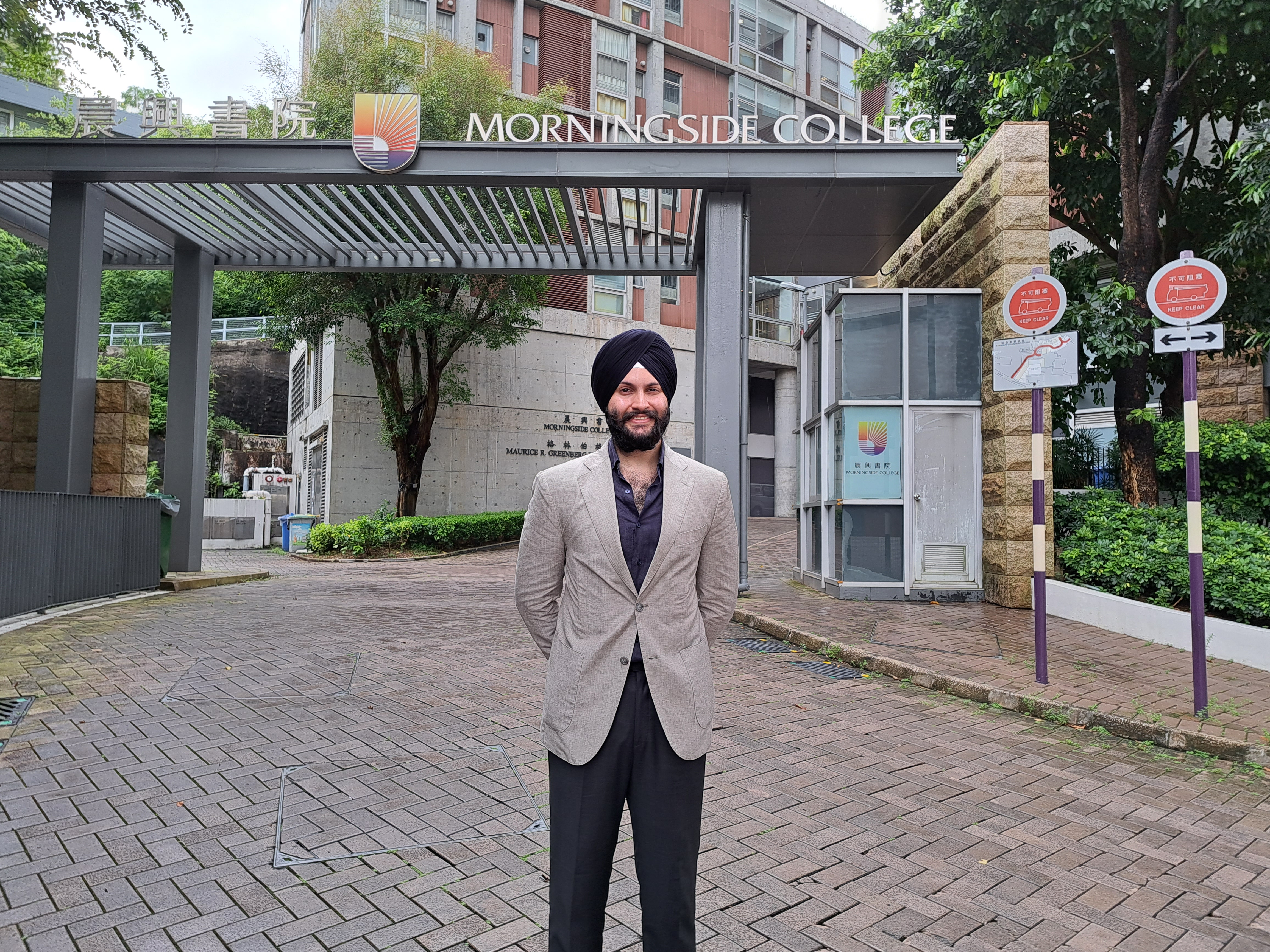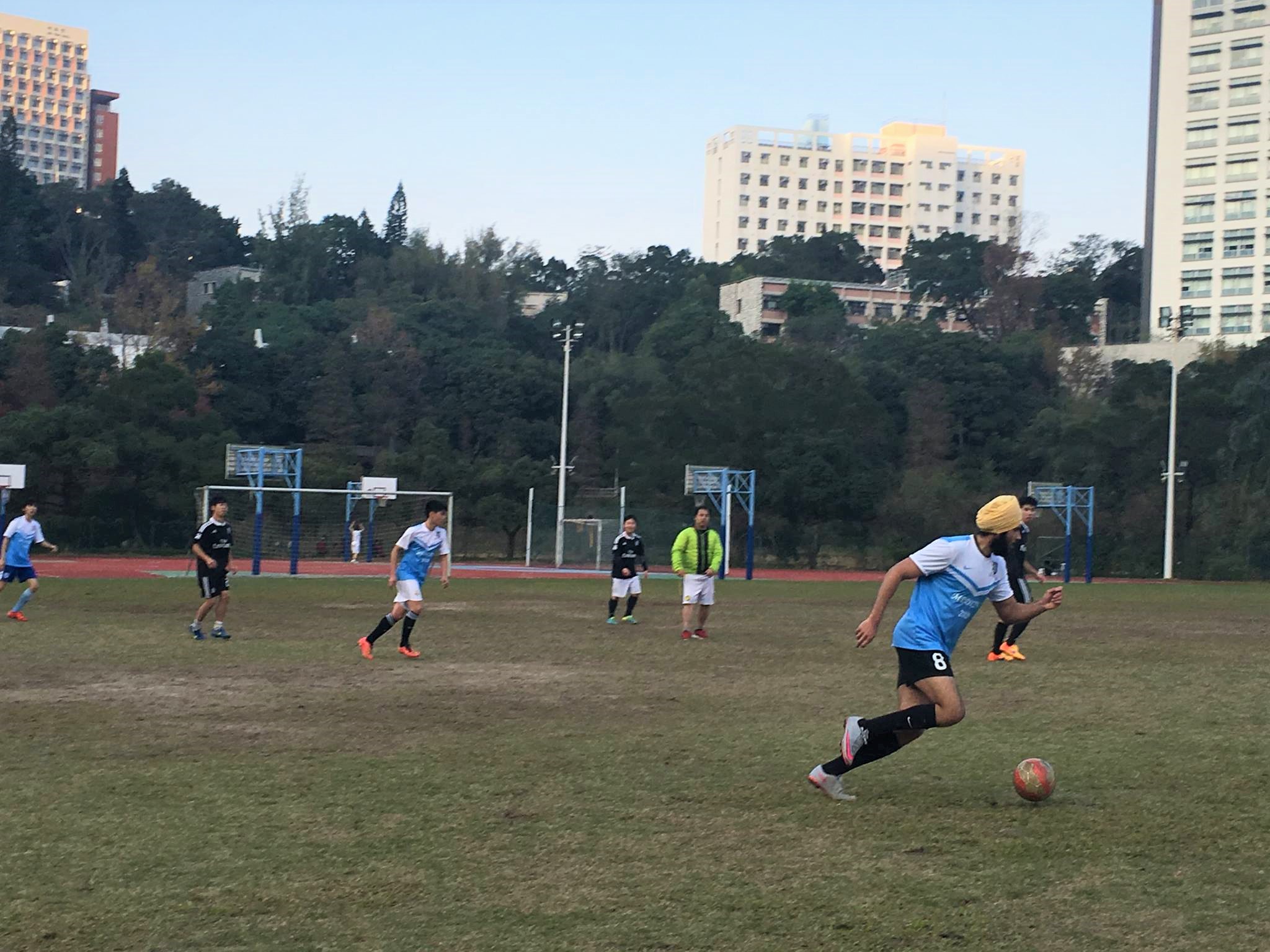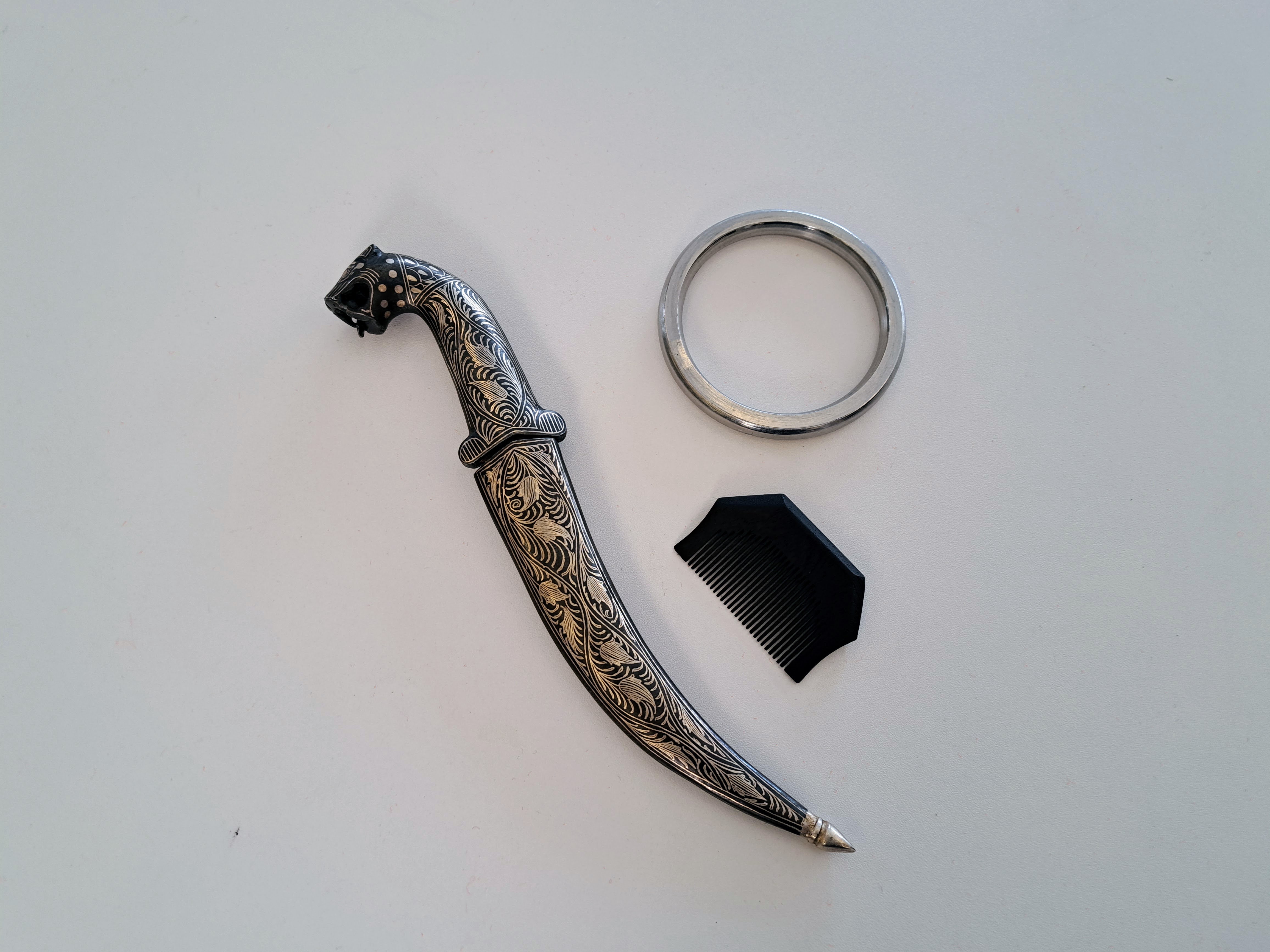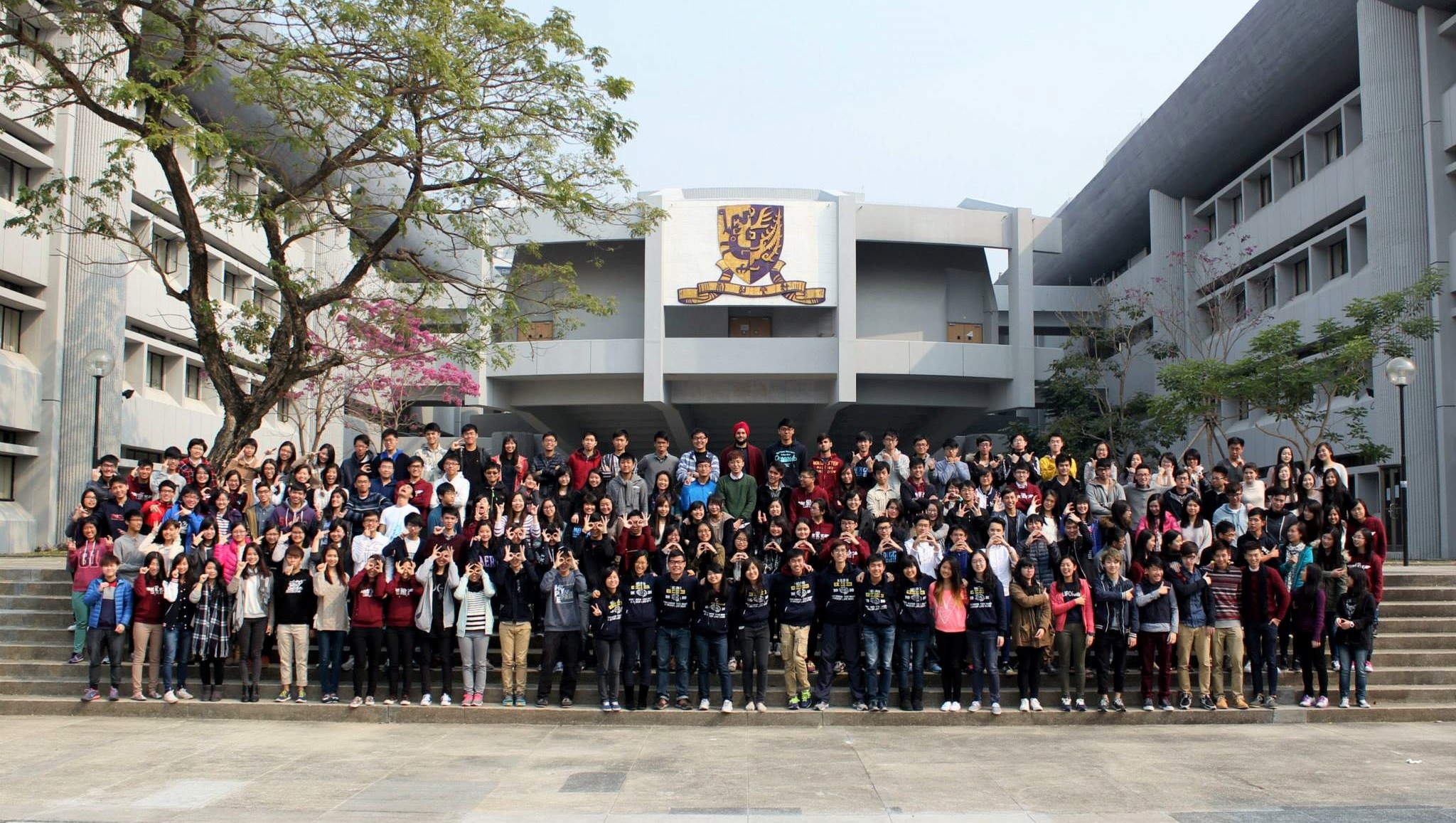Sukhdeep Singh – Third-Generation Immigrant with Deep Roots in Hong Kong
The First Turban-Wearing Sikh Doctor in the City's Public Hospitals
Known for being valiant, Sikhs were recruited to serve in the police in Hong Kong, as their community began taking shape gradually. Sukhdeep Singh (20/MC/MBChB) is a locally-born-and-raised Indian-Hong Konger who embraces Sikhism. When he joined the Prince of Wales Hospital after graduating from CUHK, he became the first-ever Sikh doctor to wear a turban at a public hospital locally. Wearing a doctor's gown with his non-Chinese outlook and speaking fluent Cantonese, Sukhdeep has built a professional image for the Sikh community. More importantly, this identity has given him a mission to break through the racial, religion and language barriers and serve the city he calls home.
 Sukhdeep is the first Sikh doctor who wears the turban at a public hospital, setting a professional image and serving the community.
Sukhdeep is the first Sikh doctor who wears the turban at a public hospital, setting a professional image and serving the community.
The Heartache from Seeing His Ill Mother's Suffering
Fuels a Determination to Help Others in the Medical Profession
According to information from the local Sikh community, the first family to settle in Hong Kong has spread to the seventh generation. Meanwhile, Sukhdeep is in the third generation of his family to live here, after his grandfather relocated from India to serve as a guard. He says his aspiration to become a doctor came from the experience of his sick mother's stay at the hospital: “I felt helpless to see her in pain. I became determined to study hard with the ultimate goal of practicing medicine, so that I can help alleviate Hong Kong patients' pain and suffering. This thinking is in line with Sikh belief in service to others.”
Under an impression that the CUHK MBChB course was taught in Chinese, Sukhdeep thought that he would have a hard time in his study. His younger brother cleared up this misunderstanding: “I chose CUHK because of its harmonious learning atmosphere and the stunning campus. Its unique college system is also very attractive to me.” The Orientation Camp prior to his admission in 2014 instilled a lasting impression – that Morningside College students comes from an international background, which is great for him. “Our Warden is very close to all students. As Morningside was home to many medical students, we help each other out in our studies. I also joined the Morningside Soccer Team, and breaking a sweat on the field with my teammates has groomed invaluable friendships.”
 Being an avid sports lover, Sukhdeep thinks the football pitch is a battlefield for him and his schoolmates.
Being an avid sports lover, Sukhdeep thinks the football pitch is a battlefield for him and his schoolmates.
Calling Himself Dr. Singh to Bond Closely with Patients
Sukhdeep became a practicing Sikh through the Amrit Ceremony in 2016. Since the religion teaches that people are created equal, all male Sikh's surname is Singh, which means “the lion”. Followers must also observe the five symbols, known as the 5K's, at all times: “Kesh” - unshorn hair, is to keep his hair and beard as a haircut is against nature, but he should wear the turban to keep the hair neat; “Kanga” - hair comb, a wooden comb placed inside the turban for keeping the hair tidy; “Kara” - bracelet, a symbol of elegance; “Kacchera” - undergarment, the special shorts which control desires; and finally “Kirpan” - ceremonial sword, which represents courage and adventure, as well as self-defence and the protection of others. Sukhdeep points out that in keeping with the times, the sword has become smaller while the edge is blunt. He is glad that he had never had to use it.
 Among the Sikh ‘5K’ are the Kirpan (ceremonial sword), Kara (bracelet) and Kanga (hair comb).
Among the Sikh ‘5K’ are the Kirpan (ceremonial sword), Kara (bracelet) and Kanga (hair comb).
In 1901, the Sikhs in Hong Kong built the first and only Sikh temple in Wanchai. Today, there are approximately 12,000 Sikhs in Hong Kong with many professionals in the mix. Sukhdeep points out that there are already Sikh medical practitioners in Hong Kong who are not formally initiated and do not wear the turban. This is the reason why he is considered as a breakthrough with great significance for his community: “As most members are born-and-raised in Hong Kong, the community is thrilled to see a Sikh doctor contributing to society, promoting greater acceptance in the general public. At first, I worried about scaring off patients with my turban and long beard, particularly the senior citizens. At first, they thought they had to speak to me in English, but as soon as I start speaking in fluent Cantonese and introduce myself as ‘Dr. Singh’, the ice is broken. I hope I can cross the race and religion barriers to change the outdated mindset that ethnic minorities are only competent in grassroot jobs, and promote a harmonious and united society.”
 Sukhdeep has been formally initiated as Sikhat the Amrit Ceremony in 2016.
Sukhdeep has been formally initiated as Sikhat the Amrit Ceremony in 2016.
The COVID-19 outbreak has turned public hospitals to warzones. As a brave Sikh, Sukhdeep volunteered to join the “Dirty Team” to treat confirmed patients. However, the N95 facemasks were not able to fit his face because of the long beard on his chin and face. “I appreciate that the hospital was not afraid of troubles, and tailormade a transparent hood like the spacesuit helmet for me. This provided me with necessary protection and the peace of mind to stand in solidarity with my teammates to fight the virus together.”
Establishing the Pargaas
Provide Support for the Youth towards Professional Development
In a double achievement in the family, Sukhdeep's younger sibling, Saajandeep Singh, has become Hong Kong's first turban-wearing lawyer last year. In reflection, Sukhdeep says their education at an international school has given them well-rounded career development support and taught them how to prepare their portfolios, personal statements or interview skills, helping to get them into their favourite field of studies. “On the other hand, Band 3 or 4 secondary schools may not have sufficient resources to provide such comprehensive career development guidance. It would be unfortunate if a student misses the opportunity to pursue his professional development.” In 2018, Sukhdeep established Pargaas, a non-government organisation aiming to explore new directions for boosting the professional image of the local Sikh community. Moreover, Pargaas stays In line with Sikh's selfless spirit to organise activities and provide various support for young people from all walks of life to incubate a culture of continuous learning, propelling their personal and professional growth.”
 Sukhdeep (centre, back roll) stands out from his class with a red turban and long beard.
Sukhdeep (centre, back roll) stands out from his class with a red turban and long beard.
"CU Alumni Magazine" Video Interview: https://youtu.be/gynyzqsTPrY (Chinese only)
Published in "CU Alumni Magazine" Issue 115 by Alumni Affairs Office 2023
Read online: CU Alumni Magazine Issue No. 115 (Chinese Version Only)
pdf version: http://alumni.cuhk.edu.hk/en/magazine/categories/pdfversion/202309
ISSUU version: http://www.alumni.cuhk.edu.hk/magazine/issuu/





